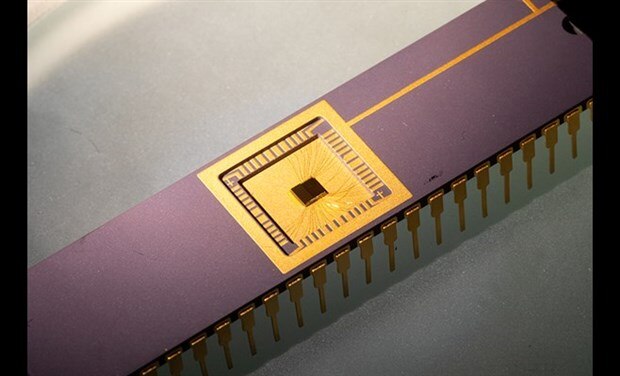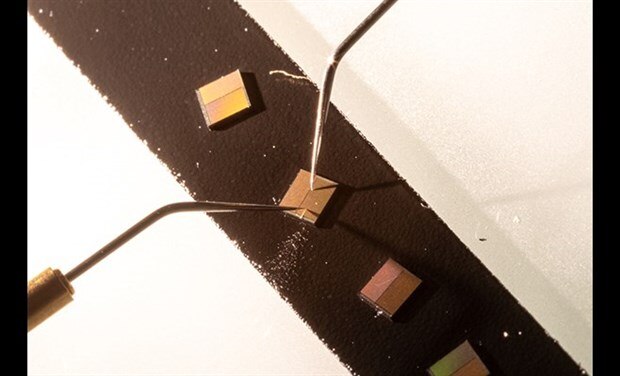This circuit could be used to provide limitless, low-voltage, clean power for small devices or sensors. (Image Credit: University of Arkansas)
Physicists at the University of Arkansas have developed a circuit that utilizes graphene to produce unlimited clean energy. By capturing graphene's thermal motion, the circuit can convert it into an electrical current. This could be integrated into a chip, providing limitless, low-voltage, clean energy for small devices or sensors. The team published their findings on APS Physics.
The concept of harvesting energy from graphene is disputable. This is because it disproves physicist Richard Feynman's famous assertion that the atoms thermal motion, called Brownian motion, cannot perform work. The team discovered that the thermal motion of graphene at room temperature induces AC in a circuit, which was once deemed impossible.
In the 1950s, Léon Brillouin published a revolutionary paper that contradicts the idea that integrating an individual diode to a circuit is the solution to harvesting energy from Brownian motion. Keeping this in mind, the team created their circuit with two diodes to convert AC into DC. With both diodes running in opposite directions, the current is able to flow both ways, providing independent paths through the circuit. This produces a pulsing DC current that performs work on a load resistor.
The small chip uses graphene to generate unlimited clean energy. The circuit is capable of capturing graphene's thermal motion and converting it into an electrical current. (Image Credit: University of Arkansas)
The team also discovered that their design boosted the amount of power delivered. "We also found that the on-off, switch-like behavior of the diodes actually amplifies the power delivered, rather than reducing it, as previously thought," said Paul Thibado, professor of physics and lead researcher in the discovery. "The rate of change in resistance provided by the diodes adds an extra factor to the power."
To prove that the circuit's power was boosted from the diodes, the team used a new field of physics. "In proving this power enhancement, we drew from the emergent field of stochastic thermodynamics and extended the nearly century-old, celebrated theory of Nyquist," said coauthor Pradeep Kumar, associate professor of physics and co-author.
Both the graphene and circuit share a symbiotic connection. Even though the thermal environment performs work on the load resistor, the circuit and graphene have the same temperature, and heat fails to flow between them.
This is an imperative difference since a temperature variance between the graphene and circuit, in a power-generating circuit, negates the second law of thermodynamics. "This means that the second law of thermodynamics is not violated, nor is there any need to argue that 'Maxwell's Demon' is separating hot and cold electrons," Thibado said.
Additionally, the team discovered that the graphene's slow thermal movement induces a current at low frequencies in the circuit. This is essential from a technological standpoint since electronics operate more efficiently at lower frequencies.
"People may think that current flowing in a resistor causes it to heat up, but the Brownian current does not. In fact, if no current was flowing, the resistor would cool down," Thibado explained. "What we did was reroute the current in the circuit and transform it into something useful."
The team's goal is to determine whether or not the DC current can be stored in a capacitor for later use. To do this, the circuit needs to be miniaturized and patterned on a silicon chip. These could eventually lead to low-power battery replacement if millions of these circuits are built on a 1 mm x 1 mm chip.
Have a story tip? Message me at: cabe(at)element14(dot)com


